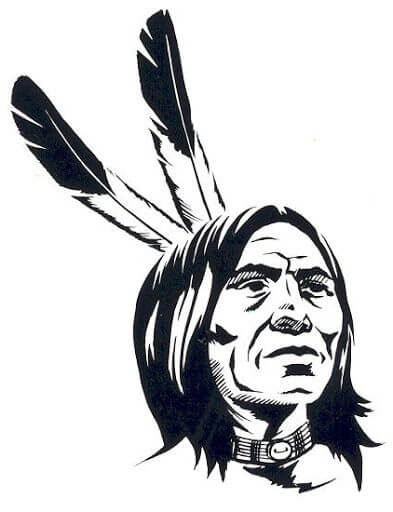- Home
- Holiday Ideas
-
-
- Choose Your Traveling Theme
-
- Adventure Tourism
-
- Cultural Tourism
-
- Tour Packages
-
-
- Packages by State
-
- Holidays by Interest
-
- Popular Tour Packages
-
- Fair And Festivals
-
- Ayurveda And Yoga
-
- Offers
-
- Destinations
-
Gujarat Tribal Tour
 Gujarat Tribal Tour
Gujarat Tribal Tour
With the knock of modernization in India, finding the old culture, traditions s well because the ancient people isn’t a simple job. In any case, there are still a few states in India where one can revive himself and have a brief look at the old Indian people and their straightforward way of life.One such Indian state is Gujarat. aside from unspoiled beaches, medieval edifices, and rich Indian culture and tradition, the state is well acknowledged worldwide for its tribal life.
Come and explore with us the sizable population of tribals in Gujarat. Our tour will allow you to satisfy different tribes of the state and closely witness their lifestyle, culture, and traditions. This travel package will offer you an opportunity to slide into the life-style of Gujarat.



Duration:13 Days / 12 Nights
With the knock of modernization in India, finding the old culture, traditions s well because the ancient people isn’t a simple job. In any case, there are still a few states in India where one can revive himself and have a brief look at the old Indian people and their straightforward way of life.One such Indian state is Gujarat. aside from unspoiled beaches, medieval edifices, and rich Indian culture and tradition, the state is well acknowledged worldwide for its tribal life.
Come and explore with us the sizable population of tribals in Gujarat. Our tour will allow you to satisfy different tribes of the state and closely witness their lifestyle, culture, and traditions. This travel package will offer you an opportunity to slide into the life-style of Gujarat.
-
1
Day 01: Arrive Ahmedabad
Gandhi Ashram, AhmedabadUpon arrival at Ahmedabad airport, meet with our representative, and transfer to the hotel. After fresh-n-up, we’ll visit the Gandhi Ashram, located on a quiet peaceful stretch of the Sabarmati River, Gandhi found out an easy retreat in 1915. This was his Satyagrah Ashram and for several years it had been the nerve center of India’s freedom movement. Hridaya Kunj, the straightforward cottage where he lived, is now a memorial and preserved because it was during the Mahatma’s life-time. Stay overnight at hotel.
-
2
Day 02: Ahmedabad - Poshina
After breakfast, we’ll leave for Poshina. On arrival, check the hotel. After fresh-n-up, we’ll explore the villages of Poshina. Here, we’ll meet with the Garasia tribal. Around Poshina are hamlets of the Bhil and Garasia tribal communities, known for his or her colorful attires and artistic ornaments. An overnight occupies the hotel.
-
3
Day 03: Full day in Poshina
Poshina Village, GujaratToday, we’ll choose a full day excursion to Danta village. Here, we’ll meet with the Dungri Garasia tribes. Thanks to the paucity of excellent agriculture land, there are a couple of chances of sustainable agriculture and farming. within the evening return to Poshina for an overnight stay.
-
4
Day 04: Poshina - Patan - Modhera - Dasada
After breakfast, we’ll leave for Dasada. En-route we’ll visit Patan and Modhera. The village is legendary for its Patola weaving by the Salvi community. Here, we’ll see how they work on weaving and let of Patna fabric begin. Watch the Mushroom fabrics woven as a mixture of silk & cotton with the latter forming the backing, dying, and style.
Modhera, GujaratFurther, we’ll visit the Rani Ki Vav, Patan Step Well, built by the queen Udaymati, the wife of Bhimdev. These are a number of the simplest example of such architecture for water wells that’s peculiar to Gujarat. There are wonderful carved images within the niches of the walls of this multi-storied step well. it had been one among the most important and therefore the most sumptuous structures of its type. Among its ruins, one pillar still stands which is that the proof not only of the elegance of its design but also an excellent example of this era.
Later, drive to go to Modhera Sun temple-dedicated to god Sun. The Sun temple of Modhera was inbuilt 1026 AD during the reign of the Solanki king Bhima, Modhera Sun temple marks the height of the revolution in Indo-Aryan Hindu temple form Typology. it’s positioned in such a fashion that the rising sun rays illuminate the deity within the innermost sanctum sanctorum through the most entrance at the time of equinox only.
After visiting the Sun temple, we’ll leave for Dasda. On reaching, transfer to the hotel for an evening stay.
-
5
Day 05: Dasada
Dasada Village, Gujarat Today, after breakfast we’ll enjoy our jeep safari to the small Rann of Kutch to ascertain the famous ass. aside from ass, we’ll be ready to sight Blackbuck (Indian antelope), Nilgai or nilgai, the graceful chinkara, Indian Wolf, Rommel, Indian Fox, Jackals, Desert, and Jungle Cats, hyenas and in migratory birds like Flamingos, Pelicans, Ducks, Cranes, and Storks, etc.
Later, return to the hotel for lunch. After lunch, it’s an ideal opportunity to explore the Rabari and Bhairwad tribal village around Dasada. We’ll visit the horticultural Vadiara and Kharapat Rabaris of Dasada, known for their weavings, the silk-weavers province at Dasada and Ambala village of the Bharwad shepherds and goatherds. The weaving cooperative at Bajana and other artisan’s workshops also can be included within the tours. Other societies near Dasada are Padhars (primarily fishing people), the Siddis and therefore the semi-nomadic Mirs, Jaths (Muslim herders), Bajanias. Stay overnight at hotel.
-
6
Day 06: Dasada - Bhuj
After breakfast, we’ll leave for Bhuj. On arrival, check the hotel. After fresh-n- up we’ll visit the Collector’s office to get the permit for the next 02 days to explore its tribal. then one can choose a visit to the nearby tribal market. within the evening, return back to the hotel for an overnight stay.
-
7
Day 07: Bhuj - Bani Village - Bhuj
Banni Village, GujaratToday after breakfast, we’ll choose a full-day excursion to the Banni group of villages. Here, we’ll be visiting the villages of Hodka, Ludiya, and Dhordo to meets it’s native, which are Jat, Harijan, Meghwal and Mutva, etc.
Banni:Banni: In the Banni territory of Kutch the Meghwal-Harijans who moved from Rajasthan use Kambira, Kharek, Kudi Stitches in their weaving. Also, outline and stitch embroidery of the world and really minute mirror designs almost like the famous Mutwa embroidery of the world. they create wall hangings, waistcoats, and pouches in Kharek Stitch and do ‘Moti Bharat’ or beadwork on handheld fans, bracelets, toys, and belts.
Hodka:Hodka: The Hodka derives from the Gujarati word ‘Hodi’ which suggests ‘boat’. Since, the villages here are called jheels, where potable water is out there. Hodka is legendary for its beautiful embroidery and dirt work the maximum amount as leathercraft. Both men and ladies are actively involved in developing the art and craft tradition of the region.
Ludiya village: Harijans and Muslims are the main communities during this village. the most occupations of the locals here are monsoon farming, cattle rearing, intricate wood carving, intricate embroidery work, mud-work, and mural for decorating homes. Harijan men are involved in wood carving, the ladies take up embroidery and wall-decoration.
Dhordo: The place is best to ascertain beautiful traditional mud houses (Bhungas) with mirror work and its fine Mutwa embroidery with tiny mirrors. within the evening return to the hotel for an overnight stay.
-
8
Day 08: Bhuj
Today, we’ll visit the village of Bhujodi. Here, we’ll see their artisans in weaving thick shawls and blankets. The conventional custom of weaving cloaks and covers from coarse sheep hair appeared ages prior basically as such a bargain between the “Rabari” people group or the nomadic grazing community and subsequently the vankars (weavers).
After Bhujodi, we’ll drive to Tundav and to explore the village of Rabaris, around 200 Rabari families live here in around houses. the ladies are wearing black woolen clothes. Further, visit Nirona village to possess a glimpse of the highly productive craft producing area they made lacquered wooden goods. Later, return to the hotel for an evening stay.
-
9
Day 09: Bhuj - Dholavira - Wankaner
After breakfast, we’ll leave for Wankaner. En-route we’ll visit the deserted village of Dholavira to explore its archaeological site. Further, continue to drive to Wankaner. Check-in at your pre booked hotel. Stay overnight at hotel.
-
10
Day 10: Wankaner - Jambughoda
Jambughoda, GujaratToday, we’ll have an excursion to the Lothal Ruins, which is legendary for Harappan civilization. Further, we’ll visit the Champaner.
Champaner: it’s an ancient fortified city. There are two stories about the origin of the name of this town. Some believe that’s named after Champaraj who was the founding father of the town, while others believe that the town was named after the Champa Tree which is found here.
Visit Champaner Fort. it’s an ancient fort located at the foothills of Pavagadh. Mohammed Begada (The famous Muslim King of Gujarat) captured the fort in the 15th Century after an extended siege against the Khichi Chauhan Rajputs. Later, continue to drive to Jambughoda. On arrival, check the hotel for an overnight stay.
-
11
Day 11: Jambughoda (Chhota Udaipur)
After breakfast, full-day excursion Chhota Udepur to go to the villages Rathwa and Nayak tribes. Also, visit the weekly marketplace for Udepur (weekly market – held a day at different villages). On the way back to the hotel, we’ll visit the local houses in Pithora painting. An overnight occupies the hotel.
-
12
Day 12: Jambughoda - Ahmedabad
After breakfast, leave for Ahmedabad. On arrival, check the hotel. The evening is free for leisure. An overnight occupies the hotel.
-
13
Day 13: Ahmedabad - Departure
After breakfast, leave for Ahmedabad. On arrival, check the hotel. The evening is free for leisure. An overnight occupies the hotel.
 TOUR BOOKING
TOUR BOOKING
WANT TO RENT A CAR IN INDIA ?
Choose Your Traveling Theme

 TOUR BOOKING
TOUR BOOKING















